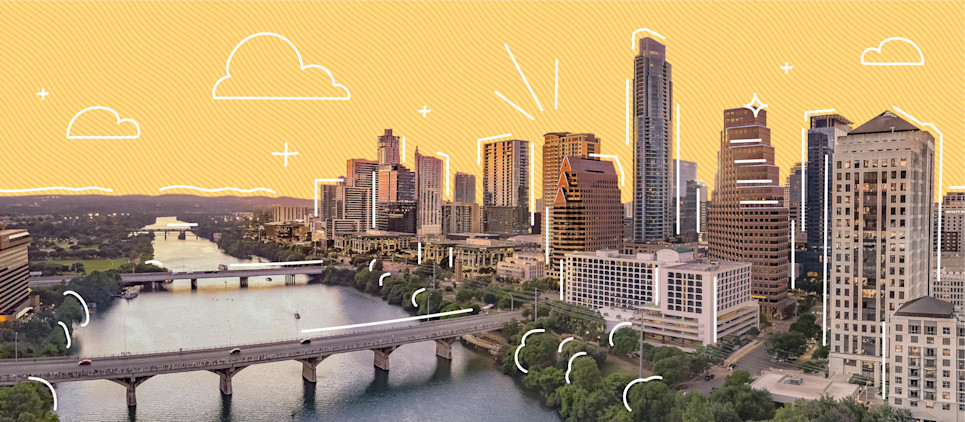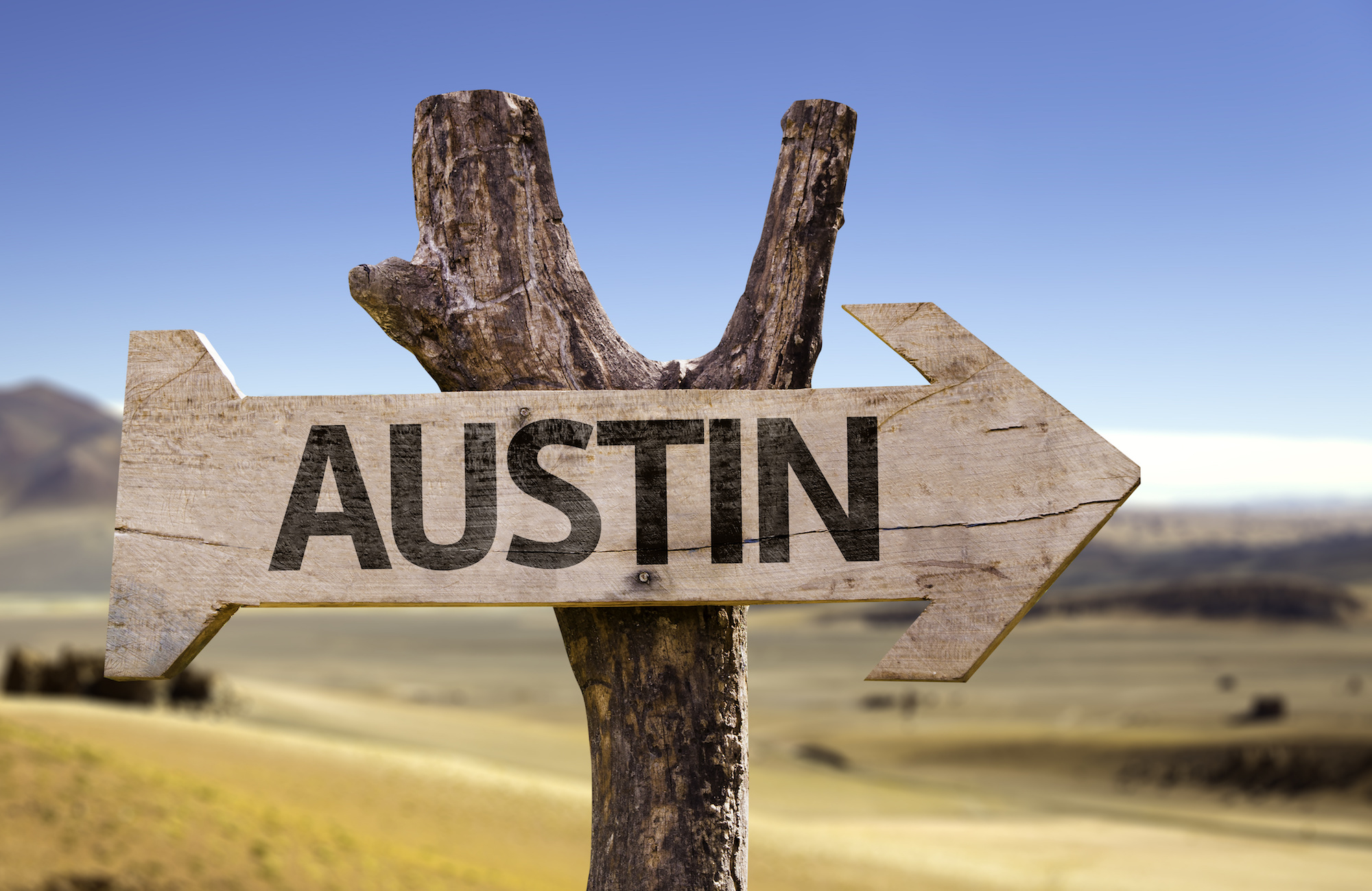What is the real cost of living in Austin, TX?
Known for its legendary music scene and unique mix of cowboy culture and artistic counterculture, Austin, Texas, is a magnet for creatives. Over the past decade, the progressive and defiantly quirky city has grown more than 30%, due largely to an influx of new tech companies as well as the expansion of the local semiconductor and software industry.
While population increases usually drive up the cost of living—and Austin is no exception—the city is still a less expensive locale than other major cities in the United States. On Numbeo’s cost of living index, which factors in the cost of consumer goods prices, including groceries, restaurants, transportation, and utilities, Austin scored 62.96 out of 100 in March 2021—meaning it costs almost 40% less to live there than it does to live in New York City, the index’s benchmark with a score of 100.
Factoring in rent, that number drops to 59.27, which puts Austin on par with Houston, Dallas, and other Texas cities, and far below the cost to live in other cities with booming tech industries, such as San Francisco and Seattle.

Table of contents
Housing: Rental PricesHousing: Home Purchase PriceUtilities CostFood CostTransit CostAverage SalaryHousing: Rental Prices
In the last few years, renters in Austin have overtaken homeowners in numbers. And while rent has risen somewhat in that time, as of March 2021, Austin’s average rent is still fifteenth in the country; at $1,431, it’s almost equal to the nationwide average of $1,463.
This city-wide average rent is a bit misleading, as there is a big disparity between the rents in Austin’s center and those outside of it. Downtown neighborhoods such as Market District and West End—which are home to luxury, high-rise apartment buildings—can see rents climb upwards of $2,500; whereas those on the northern edges of the city’s sprawl can dip to around $1,000. Despite these two extremes, most popular neighborhoods including Travis Heights, Hyde Park, South Congress, and East Riverside have rents hovering around that $1,431 average.
While the numbers sound high, living in Austin doesn’t have to be out of reach. Coliving with roommates allows you to spend significantly less than the average cost of solo housing.
Housing: Home Purchase Price
Despite the surge in renters in Austin, the real estate market is still hot for homeowners. In January 2021, the median sale price of a home in Austin rose 15% above the previous year. The typical home price of $454,896 is just under twice the national average, and a fraction of the cost of homes in San Francisco and New York.
Housing costs become more affordable the farther from the city center you get, particularly in the north and east. But the most affordable houses are in Austin’s suburbs, including Cedar Park, Pflugerville, and Round Rock. And be aware, Texas does have a property tax rate of 2.06%, which is one of the highest in the country.
Utilities Cost
Despite Austin’s hot and humid summers, which demand air conditioning, residents can expect to pay just around $146 per month for gas, electricity, water, and garbage pickup, or about 15% less than the national average. Internet here costs roughly $62, which is on par with what the average American pays.

Food Cost
Austin’s food culture has boomed in popularity, drawing out of town visitors to its iconic barbeque joints. It follows, then, that food is one of the more expensive aspects of life in Austin, particularly when you’re dining out. Depending on the type of restaurant, meals can range from $15 to $50, which is similar to meal prices in other foodie cities including San Francisco and Washington, D.C. Thankfully, less expensive and equally delicious options abound at the city’s many pop-up eateries and food trucks, and a pint of local beer here is still refreshingly cheap at under $5.
Austinites make up for their nights out at the grocery store, where the average bill is about 11% less expensive than the national average. They can usually expect to pay around $302.12 on their monthly shopping trip.
Transit Cost
Austin isn’t the kind of city you get around on your own two feet; with a walk score of 41, it’s ranked 29th on the list of most walkable cities in the country. There’s a sprawl to the city, and it usually takes around 10 to 20 minutes to hop to different neighborhoods in a car, though you can easily get around downtown on a bikeshare or by hiring a pedicab (a bike taxi).
In 2019, an incredible 72% of commuters drove to work alone, and the average commuter spent 28 minutes getting to work each day. All those cars on the road means traffic, and sitting in traffic uses up a lot of gas. Fortunately, gas prices in Austin are roughly 40 cents cheaper per gallon than the average national price, and, since late 2019, have fluctuated from $2.37 per gallon to $1.45 per gallon.
There are public transit options through Capital Metro, which operates buses and a commuter train that connects downtown Austin to the far northwest part of the city. A single ride on the local buses costs $1.50, and a day pass is $2.50. But in 2016, only 3.6% of commuters were traveling by public transit.
National and local rideshare companies have also become popular—Austinites use them, but it’s become another cost to budget since, in a city this spread out, a ride from an outlying neighborhood into downtown can cost upwards of $30.
Average Salary
As of May 2019, the average hourly wage in Austin is $26.53, which, just slightly above the national average of $25.72, works out to about $55,182 annually. Austin’s minimum wage matches the federal minimum wage of $7.25 per hour. Tech workers, such as software engineers, can expect to make slightly more on average than their peers in other Texas cities. The City of Austin and the University of Austin are both major employers, and the area also has a robust service industry.
Austin may be only slightly more affordable than the average American city in many categories, but it’s far easier to live comfortably in Austin than it is in many big coastal cities—no wonder so many Californians and New Yorkers are relocating here. The recent population boom and the arrival of even more big tech companies are sure to shake things up, but for now, it’s quite an appealing place to live.
Spending responsibly on rent can help keep your personal finances on track, and shared housing is one of the best ways to lower your rent cost. Bungalow’s homes are designed for roommates, located in the best neighborhoods, and set up for seamless living. Whether you already have roommates or are looking for new ones, there’s a Bungalow with your name on it. Find your Bungalow.
Ready to find your next home?
Move-in ready homes and a built-in community so you can feel at home, together — wherever you are.
Suggested articles




